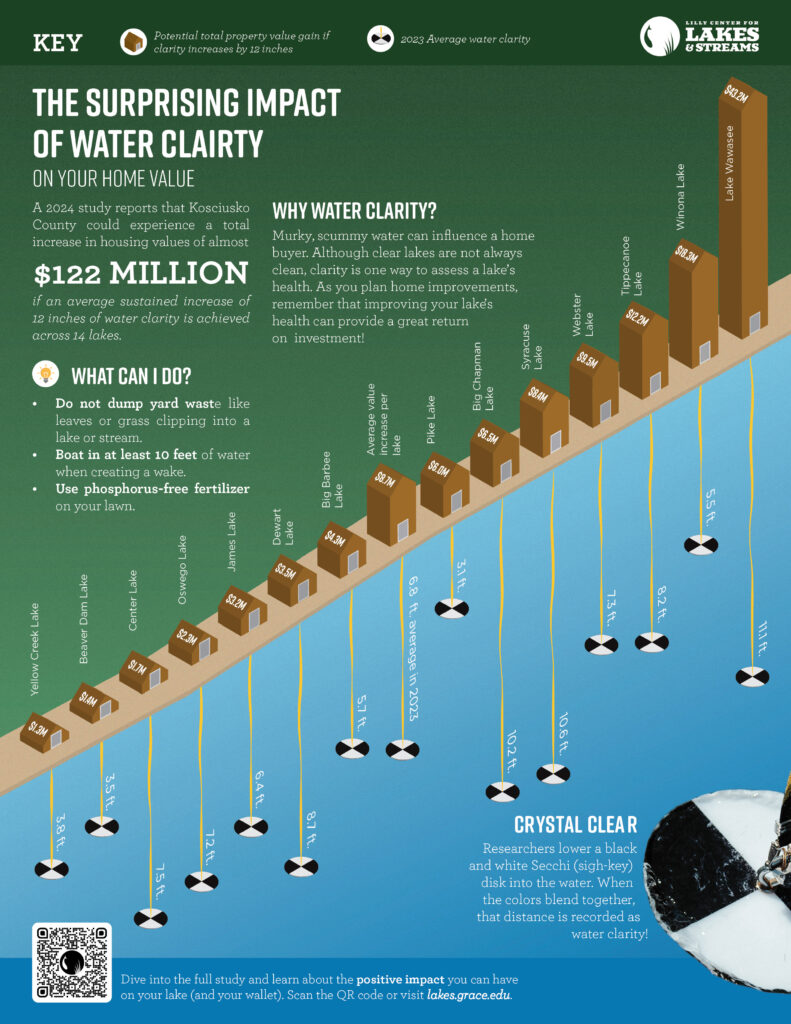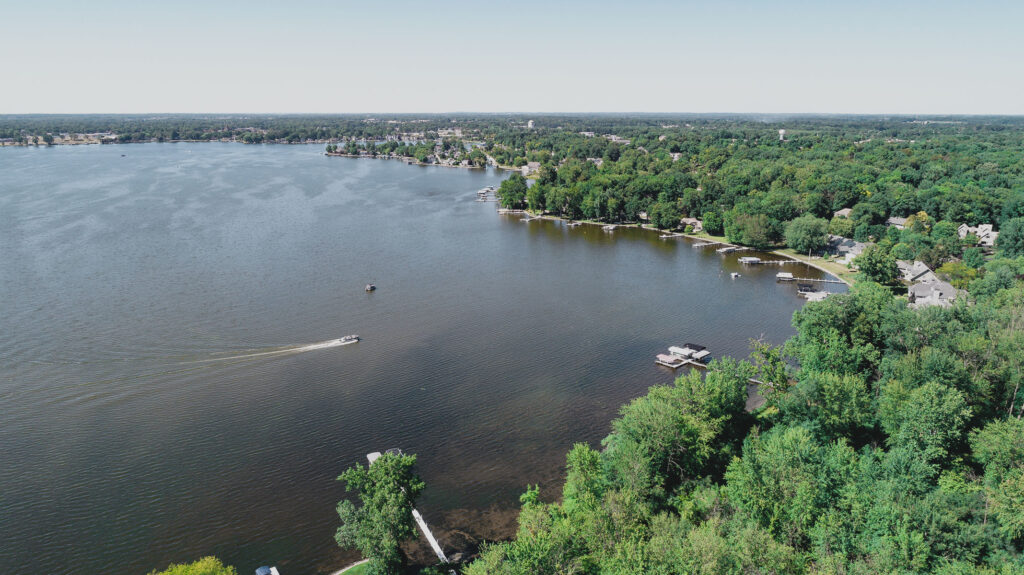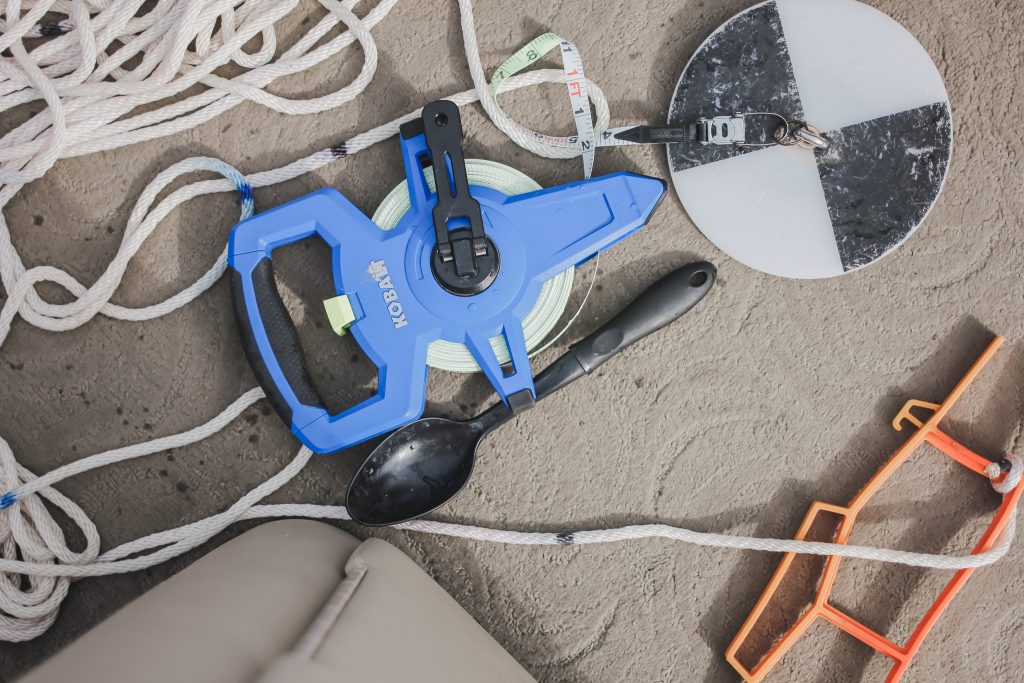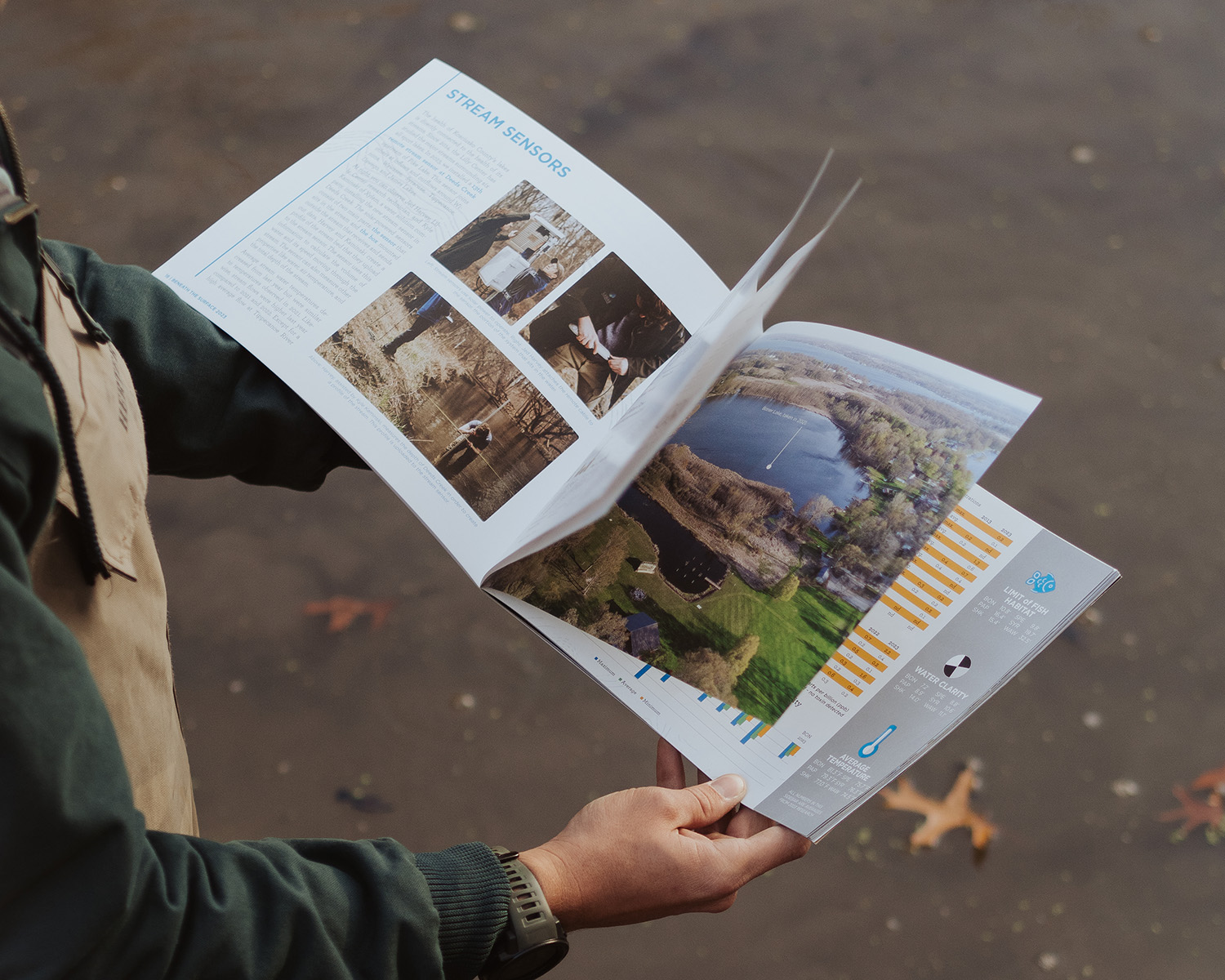Water clarity’s surprising impact on your home value

Increasing your lakefront home value is a priority – it is an investment, after all! Although traditional ways of increasing home values, like remodeling, adding square footage, or a new roof, are proven, there is one feature that can have a surprising effect on your home value: lake water clarity.
A 2024 collaborative study by the Environmental Protection Agency (EPA) and the Lilly Center for Lakes & Streams used benefit transfer math models to analyze and predict the connection between the water clarity of a lake and the value of homes near a lake. Researchers predict that Kosciusko County could see a total increase in home values of almost $122 million if water clarity improved by an average of 12 inches across the 14 major lakes.
Even homes not considered to be “lakefront” could benefit from increased clarity. Properties within 500 meters of the lake shore could also receive a value boost, although it is more modest compared to lakefront homes. The increase in value is approximately 30-50% of that of a lakefront property.

What is water clarity?
Imagine going for a plunge in your lake. When you look down, you can see your toes several feet below – that’s water clarity! Although water clarity is a desirable trait in our lakes, it can also reflect the health of a lake. Factors like sediment runoff, algae growth fueled by nutrients, and rainfall influence water clarity. When sediment and nutrients are kept low, the water remains clear, offering a pleasant experience all can enjoy.
Lilly Center scientists measure clarity by lowering a black and white disk, called a Secchi Disk, into the water. They record the point at which the two colors are indistinguishable as the clarity measurement. In 2013, the average clarity of the 14 major lakes was 5.7 feet; in 2023, the average clarity was five inches higher. On Lake Wawasee, Indiana’s largest natural lake, average water clarity increased by about four inches from 2021-2023. You can read more about your lake’s historical water clarity by reading the Lilly Center’s annual publication, Beneath the Surface.

Although a 12-inch increase in water clarity seems daunting, research suggests it is possible. Lakes in Minnesota and Washington improved their clarity by up to 10 feet thanks to various nutrient reduction projects.
Murky, scummy water is not appealing to home buyers. Although a clear lake is not always a clean lake, clarity is one way to assess a lake’s health. As you plan home improvements in the coming years, remember that improving your lake’s health can provide a great return on investment!
What can I do?
Here are three ways you can help increase the clarity of the water in your lake today:
- Do not dump yard waste (like leaves and grass clippings) into a lake or stream. Yard waste adds nutrients to the water, which can result in excess plants and algae later on. Instead, bring your yard waste to a composting area or reincorporate leaves into your garden as a natural fertilizer.
- Boat in at least 10 feet of water when creating a wake. Creating a wake in shallow water releases nutrients from the lake bed, supplying food for algae and aquatic plants.
- Use less fertilizer. Specifically, try to use phosphorus-free fertilizer! When fertilizer gets washed into a lake, it acts as a stimulant for plants and algae and can even lead to harmful algae blooms.

Dive Deeper
Dive into the full study and learn more about the positive impact you can have on your lake (and your wallet) by visiting the Lilly Center’s original resesarch.